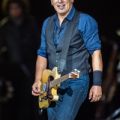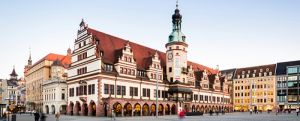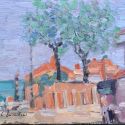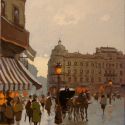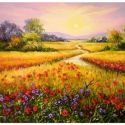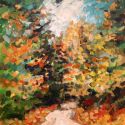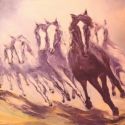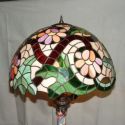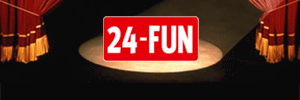 On 13 July 1985 at Live Aid Queen gave what fans and critics still regard as their very best live performance ever, even if it was just about 20 minutes, the same as other bands that organizer Bog Geldof invited. Playing some of their best hits at the time and stealing the show on the Wembley Arena, Queen not only captured it's live and TV audiences, but also made a triumphant comeback after a short period during which there was even talk of breaking up the band. Later that same day Freddie Mercury and Brian May came back for a sensible and touching version of Is This the World We Created. The funny thing is that in the beginning the members of the band, feeling estranged from each other, nearly refused the invitation to be a part of Live Aid.
On 13 July 1985 at Live Aid Queen gave what fans and critics still regard as their very best live performance ever, even if it was just about 20 minutes, the same as other bands that organizer Bog Geldof invited. Playing some of their best hits at the time and stealing the show on the Wembley Arena, Queen not only captured it's live and TV audiences, but also made a triumphant comeback after a short period during which there was even talk of breaking up the band. Later that same day Freddie Mercury and Brian May came back for a sensible and touching version of Is This the World We Created. The funny thing is that in the beginning the members of the band, feeling estranged from each other, nearly refused the invitation to be a part of Live Aid. At the end of their Music for the Masses Tour, on 18 June 1988, Depeche Mode (then already being one of the most popular and succesful band of the 80s) played the final concert at the Rose Bowl in Pasadena, USA. It would be one of the best gigs, especially after being used for a documentary, called 101 released one year later and containing most of the concert. Closing the height of their popularity, Depeche Mode were proving why they were one of the best groups of the era, and the setlist mixed new and old hits, all in a production that was very much fullfiling the hopes of the fans. And the title was chosed because it was simply the 101st concert of the tour, a happy coincidence that was cleverly used. The movie and the double live album would become best sellers for Depeche Mode, while the concert itself would grow to become iconic for the fans.
 It was on a Sunday, June 18 1967, that Jimi Hendrix played with his band, the Jimi Hendrix Experience, at the Monterey Pop Festival before an amazed audience, and for many he was the best act of the final day of the festival, and even the best one period. Despite the stiff "competition" - The Who, Janis Joplin, Grateful Dead, Otid Redding and others - Hendrix shocked the public with his energy, deafening sound and unique manner of playing. He even set fire to his guitar, a scene which has been captured on film and has become since iconic and inspiring, and provided Monterey with an energetic, often surprising and surely powerful setlist. If before the event Hendrix was still a musician who was mostly known by those passionate about the new sounds and mostly the underground, the next day he was simply a legend, putting him on the music map so to say.
It was on a Sunday, June 18 1967, that Jimi Hendrix played with his band, the Jimi Hendrix Experience, at the Monterey Pop Festival before an amazed audience, and for many he was the best act of the final day of the festival, and even the best one period. Despite the stiff "competition" - The Who, Janis Joplin, Grateful Dead, Otid Redding and others - Hendrix shocked the public with his energy, deafening sound and unique manner of playing. He even set fire to his guitar, a scene which has been captured on film and has become since iconic and inspiring, and provided Monterey with an energetic, often surprising and surely powerful setlist. If before the event Hendrix was still a musician who was mostly known by those passionate about the new sounds and mostly the underground, the next day he was simply a legend, putting him on the music map so to say. Photo: openculture.com, beatles.com, amazon.com

